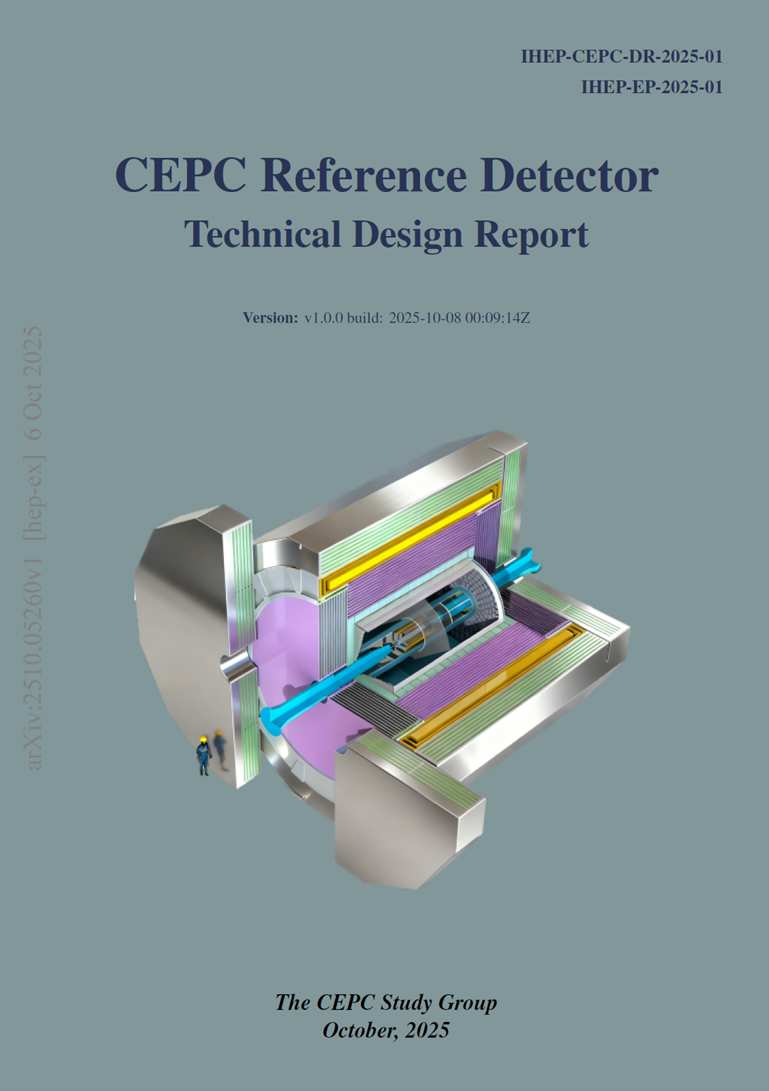CEPC Releases the Technical Design Report of Reference Detector
The Circular Electron-Positron Collider (CEPC) study group has released the CEPC Technical Design Report of Reference Detector (RefTDR) (arXiv:2510.05260). Following the publication of the Accelerator Technical Design Report at the end of 2023, this detector report signifies that the technical designs of the two core components of the CEPC project—the accelerator and the detector—have both been successfully completed. It lays a decisive foundation for turning this "Higgs factory" from idea into reality.
This newly released design report is also the first detector technical design report dedicated to a circular electron-positron Higgs factory, showcasing the advanced R&D capabilities of Chinese scientists in this field.
The CEPC project originated from the discovery of the Higgs boson in 2012. Due to its central role in explaining fundamental physics questions such as the origin of mass, this particle is known as the "God particle." To enable precision studies, Chinese high-energy physicists formally proposed the CEPC in September of the same year. The CEPC is designed as a multi-purpose "particle factory." It will not only serve as an efficient "Higgs factory" but also precisely study other fundamental particles. Its tunnel can be re-used for a future upgrade to a more powerful super proton-proton collider.
Large-scale scientific projects typically progress through three stages: conceptual design, technical design, and engineering design. The CEPC study group completed the Conceptual Design Report in 2018, clarifying the scientific goals and the baseline configuration. The project then enters the more detailed technical phase to validate key technologies and complete the detailed design of core components. The Accelerator Technical Design Report released in 2023 and the newly released Reference Detector Technical Design Report are milestone achievements of this stage.
Compared to the 2018 conceptual design, this technical design report proposes several innovative detector solutions. Highlights include:
- An electromagnetic calorimeter based on orthogonally oriented crystal bars and a hadronic calorimeter based on high-granularity scintillating glass; both are optimized for advanced particle-flow algorithms, greatly improving the energy resolution.
- A tracking detector employing the cutting-dege AC-LGAD technology, enabling simultaneous ultra-precise position and time measurements.
- An independently developed 55-nanometer readout chip that significantly improves performance while reducing power consumption, reaching the currently best level in the field of high-energy physics.
- New type of scintillating glass has been developed to have both high density and high light yield, among other advances.
To ensure the scientific soundness and feasibility of the design, the CEPC study group established an International Detector Review Committee in 2024, chaired by Professor Daniela Bortoletto from the University of Oxford. After three rounds of in-depth discussions, the review committee concluded in September 2025 that the Reference Detector Technical Design Report (Ref-TDR) presents a coherent detector concept with well-defined physics reach. The major design choices have been consolidated, and the project now stands ready to transition from conceptual design to the integrated prototyping and system-validation phase. The international committee also provided valuable suggestions for the next steps.
The swift advancement of CEPC comes amid intense global competition. Currently, there are four main Higgs factory proposals from China, Europe, and Japan. Both Europe and the United States have prioritized participation in or construction of a Higgs factory as their top-priority of physics objective. In these international efforts that will shape the future of fundamental science, through seven years of collaborative efforts by over a thousand scientists domestically and internationally, the CEPC study group has successively delivered the first comprehensive technical deliverables in both accelerator and detector. This demonstrates CEPC's strong capabilities and its readiness for the next-generation high-energy collider.
With the completion of the core technical designs, the CEPC project's next step will focus on the engineering design towards the final construction stage.

CEPC Reference Detector Technical Design Report (Credit: IHEP)